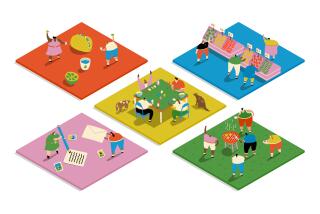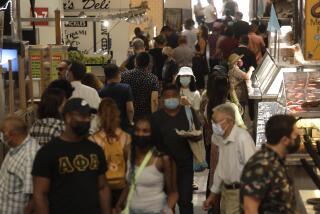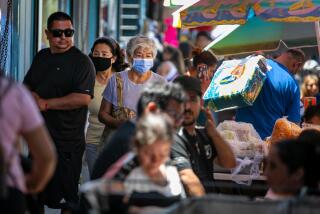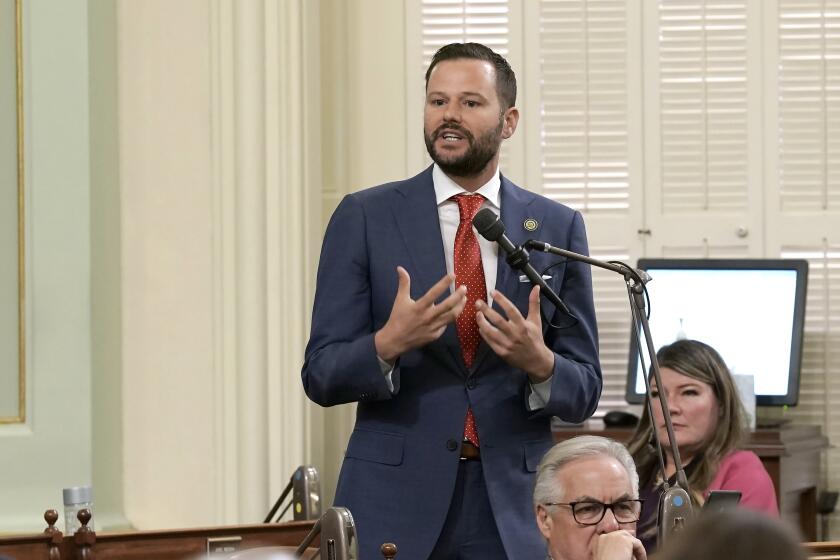Terrified of COVID, she works at home. He goes to the office. What’s a family to do?
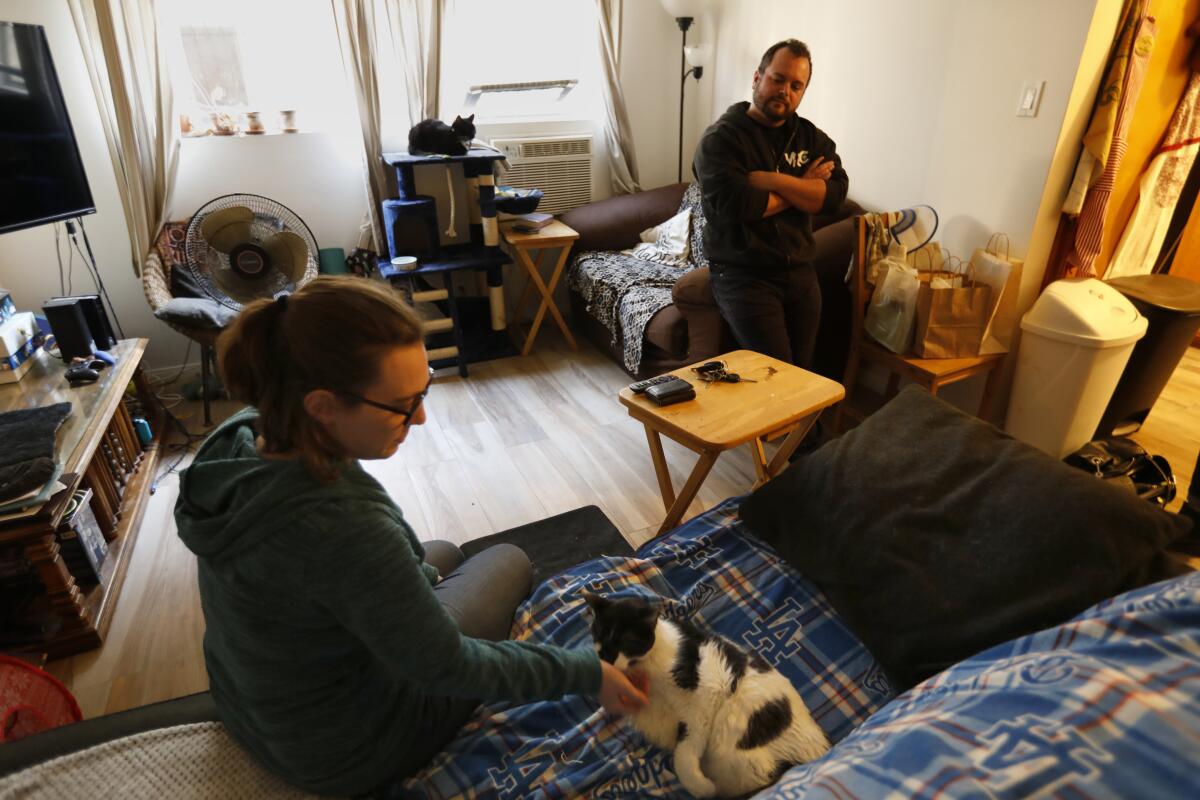
He’s a certified drug and alcohol counselor who opened a sober living house at the peak of last winter’s deadly COVID-19 surge and is on-site at least six days a week.
She works for a production company, colonized their kitchen table for her two outsize computer monitors and has stayed largely locked up in their 600-square-foot Mar Vista apartment, where they now dine on TV trays.
“When L.A. was, like, the worst place on Earth for COVID, I was going out and looking at three houses a day,” scouting locations for Hyperion Sober Living, said co-owner Jack Shain. “Cara was very anxious. That’s a light way of saying it.”
Shain’s job means he’s out in the world nearly every day, where it’s impossible to tell the vaccinated from the sick. Cara Ferraro’s allows her to stay home with the cats, her anxiety and the ever-present pile of dishes in the sink.
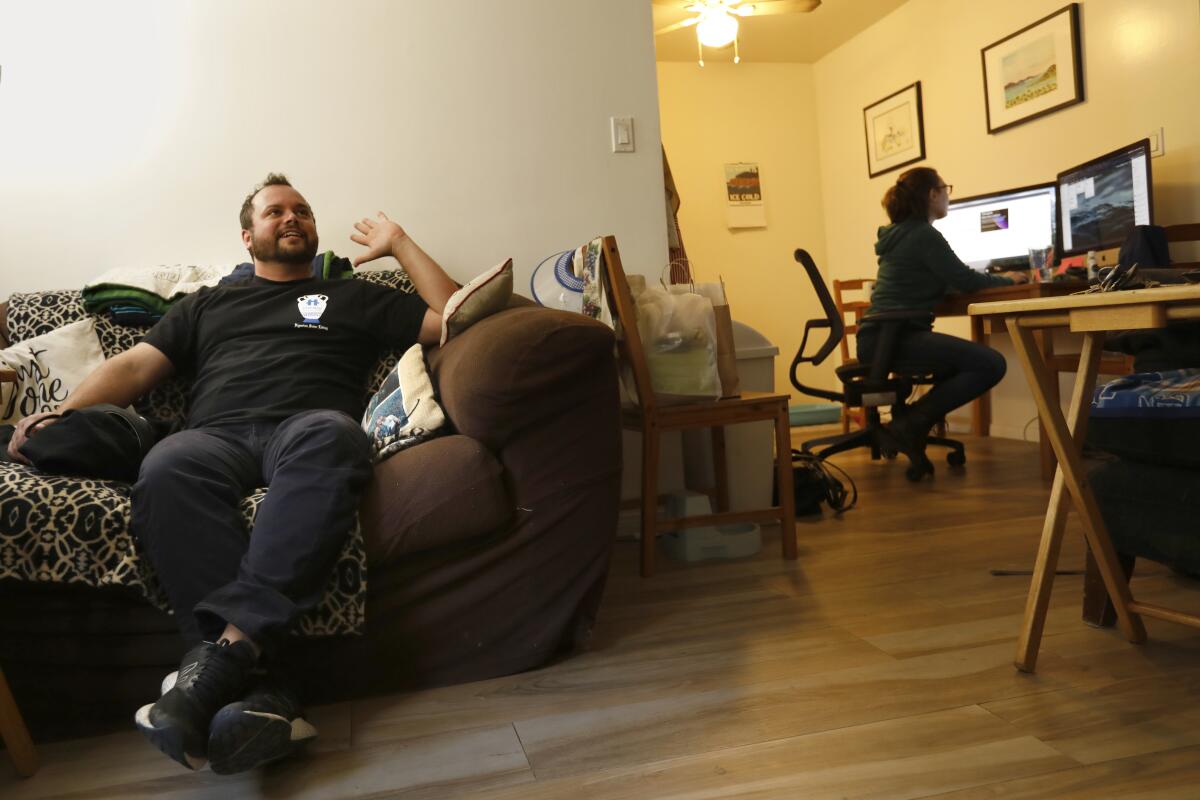
The pandemic has changed the fabric of life in many households, especially in those where members’ work circumstances are vastly different. It has raised questions of privilege and equity within families and forced difficult conversations about responsibility and burden. The issues are big and small: health, privacy — and who does the laundry, sweeps the floors and shops for groceries.
Jackie Nuñez made a color-coded Google document to divvy up chores with her partner, Jack Dobbrow. “It was beautiful,” she said. “We used it for a month.” Sophie Bennett learned to ignore her husband’s voice at 3 a.m. — he works nights from their one-bedroom Koreatown apartment. David Johnston of Torrance spends his former commute time on housework, and “I’m happy to do it.”
As Year 2 of the pandemic comes to a close, the world is stumbling toward normalcy. A majority of people who can be inoculated have received the vaccine, and, although the Omicron variant looms, work is returning, in some fashion, to its pre-pandemic circumstances.
More Americans are going back to the office. The Bureau of Labor Statistics pegs the rate of those working from home at least part time at 11.3% in November, down from a high of 35.4% in May 2020.
But that still means 17.5 million people working from home and possibly bumping up against other household members who can’t: grocery store clerks and teachers, people who provide child care and those who work in restaurants, doctors, nurses, janitors, delivery drivers.
“If someone goes out into the world and someone stays home, that creates a problem for both people,” said Arne Kalleberg, professor of sociology at the University of North Carolina, who has written about “COVID-19, Precarity and Worker Power.”
Between those who can stay home and those who can’t, he said, “the inequality is enormous.”
::
Bucky, the three-legged senior rescue cat, is asleep on the sofa, burrowed into an L.A. Dodgers blanket. Photogenic Zelda scampers on the cat tower. The multistory blue structure is tucked under the window between the papasan chair and the love seat, where Ferraro and Shain sit shoulder to shoulder.
As the pandemic dragged on, the 30-year-olds learned how to work together in the small apartment filled with belongings. At first, he ran therapy groups from the living room via Zoom. She would join staff meetings — 10 feet or so away at the kitchen table, also via Zoom, instead of at her Burbank office.
When the treatment centers where he worked began to reopen, he resumed counseling in person — and was exposed to a client who had the virus.
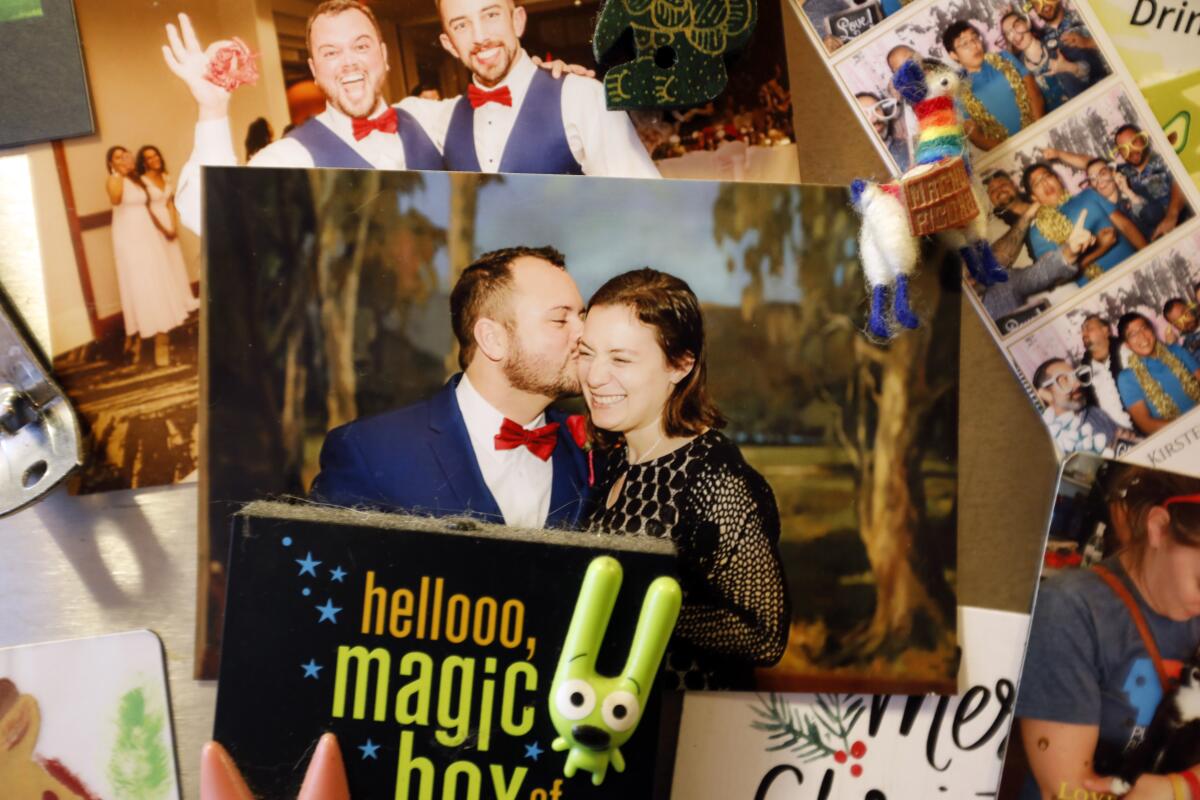
“I immediately freaked out, even though he told me not to,” said Ferraro. “I was just very like, ‘What do we do?’ I was emailing our doctor, like, ‘Can I come in for a test?’ Googling all the CDC stuff, like, ‘How does this affect me?’”
He isolated in the bedroom as long as he could stand it. She slept on the sofa, wore a mask inside the apartment. Neither of them got sick. They’ve both since been vaccinated. Ferraro went back to therapy, via Zoom. They’ve had long talks about handling anxiety — and cleaning house. The talks are ongoing. Since Shain opened the sober living center, he spends little time at home.
Shain: “I went from doing 75% of the housework to her 25% when she was working in Burbank. Now she does 97% and I do 3%. I’m not pulling my weight.”
Ferraro: “We haven’t done a deep clean in a long time.”
Shain: “The last six months have been easier, for me at least. I think we’ve accepted our new roles.”
::
The California lockdown began March 19, 2020. Jackie Nuñez and Jack Dobbrow moved in together in San Mateo two days later. They went from seeing each other a few days a week to spending every waking moment together.
“It was a strange time to move in together,” said Nuñez. “We haven’t killed each other. Cleaning is our biggest sticking point.”
The couple have since moved to Ventura. Nuñez is an assistant public information officer for the county and goes into the office every day. Dobbrow is in marketing for a Los Angeles-based electric vehicle company, a job that is permanently remote.
“Now I’m in the office, I come home and say, ‘How does this stuff get messed up so quickly? I just cleaned it,’” she recently recounted. “But someone is living in the house eight hours a day.”
When the couple first moved in together, Nuñez laid out all the household chores in an intricate Google Doc. They vowed to look at the chart every Sunday, figure out what needed to be done and split up the tasks. Their system quickly broke down.
So the 26-year-olds talk. And they argue. The conversations, Nuñez said, are “contentious” and “repetitive.”
But each time they make a little progress. She vacuums every week, cleans the bathroom and the kitchen. He’ll vacuum when she asks, clean the bathroom when she asks. But he also fixes things, does most of the driving when they go on road trips, lets the plumber in because he’s home.
“One time we had a conversation and got a [monthly] cleaning service,” said Nuñez, a self-described clean freak.
And then there was the breakthrough moment, a product of closeness, conversation and COVID-19.
“He said, ‘I don’t care for cleaning, but I know it makes you happy. That’s why I do it.’”
::
The big question facing Leonila Irias is how to stay safe while operating a child-care center from her neat pistachio-green home in northwest Hawthorne while a global pandemic ebbs and flows outside.
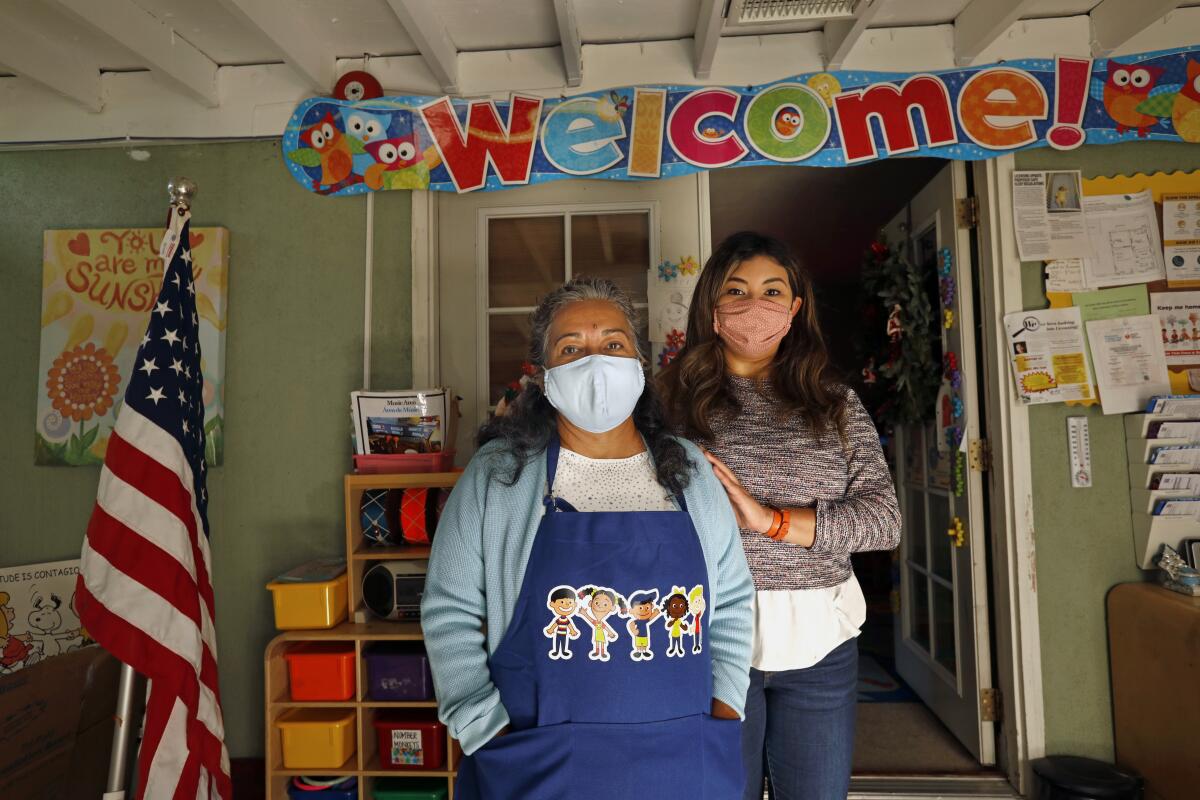
It’s where she lives with her oldest daughter, Alejandra Alarcon, a 29-year-old researcher at Loyola Marymount University’s Center for the Study of Los Angeles. It’s also where a dozen or so children arrive each day with a parent or two in tow, trailing whatever germs their own households create.
Irias is pushing 60. Although she works from home, she’s in no way a remote worker; instead, the world comes to her. That still makes her a target for a virus that has killed more than 74,000 people in California alone.
Latinos like Irias are 2.1 times more likely to contract the virus than non-Hispanic white people, according to The Times’ coronavirus tracker. When their share of the population is taken into consideration, Black people and Latinos are dying more often than others.
“There’s something very scary about hearing how the coronavirus impacted very much that group — Latinas, Latinos and Black residents, more than most, right?” Alarcon said. “I am scared about my mom’s mortality.”
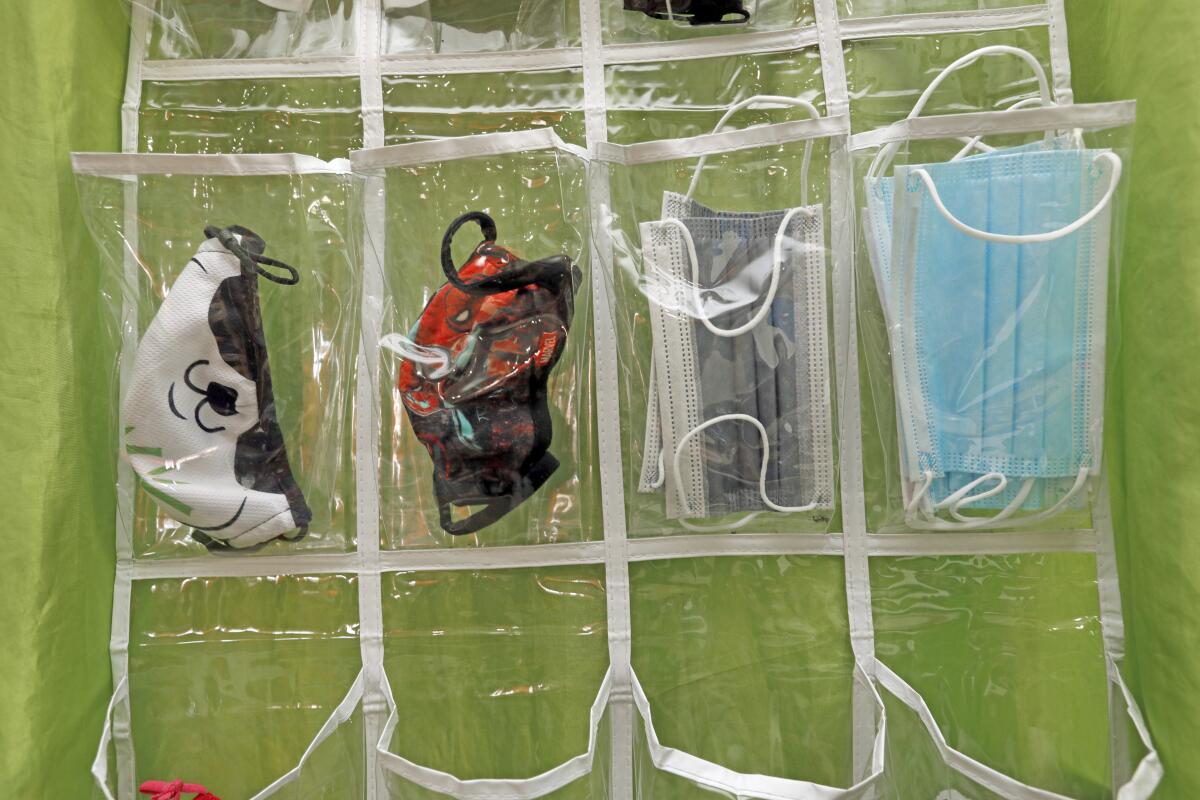
Tuesday morning before her charges arrived, Irias displayed some of the safety precautions she and assistant Perla Alvarado take every day. There’s a small table next to the gate where the children check in. It holds hand sanitizer and an electronic thermometer.
Packs of little face masks are tucked into a clear plastic rack that hangs on the door of what once was the primary bedroom. There are tiny work stations where the youngest kids sit; older ones work at the dining room table.
“It has affected everyone, especially children,” said Irias. Her charges call her abuela, grandmother in Spanish. “They don’t understand. It’s difficult to explain to children, they have to maintain distance and can’t have a hug when they come in.”
After more than a year of working at home — and sharing Wi-Fi with a dozen or so children learning remotely from the Irias Family Child Care Center — Alarcon is back on campus four days a week. Everyone on campus must be vaccinated or tested for the virus twice each week, she said.
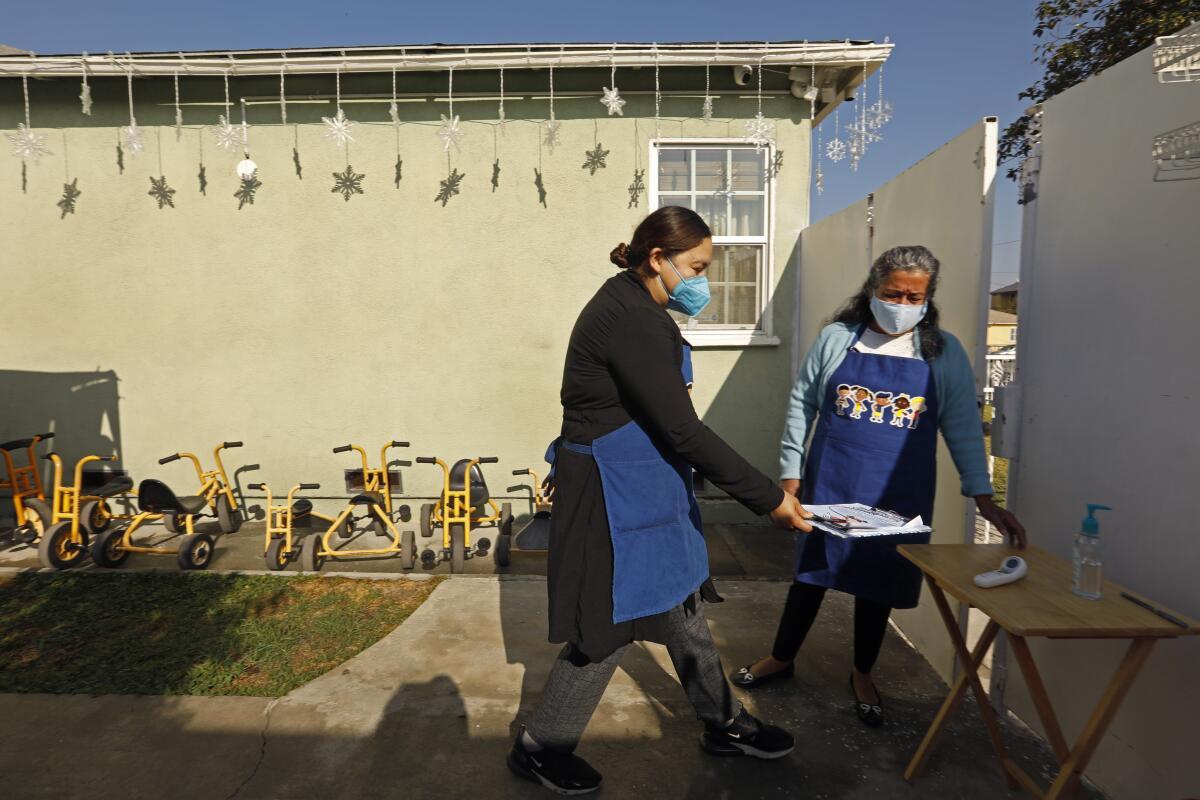
On the one hand, she no longer needs to explain to co-workers why they’re hearing the ABCs sung loudly in the background during meetings on Zoom. On the other, she now joins the kids and their families as a possible disease vector, a potential threat to her mother’s health and income.
Alarcon still worries about bringing the virus home and forcing Irias Family Child Care to close temporarily. Even a short shutdown poses a risk of losing clients, who must find alternative child-care services and might not come back to her mother’s operation.
“That’s the tension,” she said. “That’s the weird COVID tension that we have at home now.”
More to Read
Sign up for Essential California
The most important California stories and recommendations in your inbox every morning.
You may occasionally receive promotional content from the Los Angeles Times.
